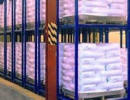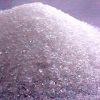| Aadhunik Industries is a manufacturing group company. Aadhunik Industries is pioneer manufacturers of Specialty Chemicals, Pharmaceutical Excipients, Food Fragrance & Flavor chemicals in India. It has toll manufacturers and representatives in UAE, Europe, Canada & USA and agents & customers in all countries like USA, Canada, Europe, UAE Dubai, South Africa, Tanzania, Kenya, Egypt, Nigeria, Uganda, Turkey, Mexico, Brazil, Chile, Argentina, Malaysia, Indonesia, Thailand, Korea, Japan, etc. Halal & Kosher certified Lithium Carbonate and other Lithium Salts like Lithium Bromide, Lithium Chloride, Lithium Citrate, Lithium Molybdate, Lithium Tungstate Manufacturers made in a FDA-GMP plant is offered. |
| The units have one or more of the certifications like FDA GMP, ISO 9001, ISO 22000, HACCP, REACH, Kosher & Halal and DMF support is available. |




Lithium Citrate SDS MSDS Sheet of Manufacturers
Lithium Citrate BP Ph Eur USP Grade manufacturers
Lithium Citrate (Hydrate) SDS Safety Data Sheet
MSDS Sheet, Material Safety Data Sheet
1. Product Identification
Synonyms: Citric salt of lithium
CAS No.: 6080-58-6
EINECS EC Number: 213-045-8
Molecular Weight: 209.92
Chemical Formula: LiO2CCH2C(OH)(CO2Li)CH2CO2Li (for Anhydrous)
2. Hazards Identification
GHS, Globally Harmonized System Classification in accordance with 29 CFR 1910
Hazard Class and Category Code(s), Regulation (EC) No 1272/2008 (CLP)
Serious eye damage/eye irritation Category 2A
Labeling Regulation GHS & EC 1272/2008 (CLP) & GHS
GHS Label Elements  Irritant |
Signal Words: Warning
Hazards statements:
H319 Causes serious eye irritation.
Hazards not otherwise classified (HNOC):
May causes mild skin irritation.
Precautionary statements:
P261: Avoid breathing dust/fume/gas/mist/vapors/spray.
P262: Do not get in eyes, on skin, or on clothing.
P264: Wash … thoroughly after handling.
P280: Wear protective gloves/protective clothing/eye protection/face protection.
P302+P352 - IF ON SKIN: Wash with plenty of soap and water.
P305 + P351 + P338 - IF IN EYES: Rinse cautiously with water for several minutes. Remove contact lenses, if present and easy to do. Continue rinsing.
P337+313: If eye irritation persists get medical advice/attention.
Classification according to EU Directives 67/548/EEC or 1999/45/EC: Hazard Symbols: Xi Irritant
Risk Phrases: R36 Irritating to eyes.
3. Composition/Information on Ingredients
Ingredient: Lithium Citrate (or hydrates)
CAS No.: 6080-58-6
EINECS EC Number: 213-045-8
4. First Aid Measures
Inhalation: Remove to fresh air. If not breathing, give artificial respiration. If breathing is difficult, give oxygen. Call a physician.
Ingestion: Induce vomiting immediately as directed by medical personnel. Never give anything by mouth to an unconscious person. Call a physician.
Skin Contact: In case of contact, immediately flush skin with plenty of water for at least 15 minutes. Remove contaminated clothing and shoes. Wash clothing before reuse. Call a physician.
Eye Contact: Wash eyes with plenty of water for at least 15 minutes. Call a physician.
5. Fire Fighting Measures
Fire: It is not considered to be a fire hazard. However it is combustible at higher temperature.
Development of hazardous combustion gases or vapours possible in the event of fire.
Explosion: It is not considered to be an explosion hazard.
Fire Extinguishing Media: Use water spray, alcohol-resistant foam, dry chemical or carbon dioxide. Use means suitable for extinguishing surrounding fire.
Special Information: In the event of a fire, wear full protective clothing and NIOSH-approved self-contained breathing apparatus with full face piece operated in the pressure demand or other positive pressure mode. Prevent fire extinguishing water from contaminating surface water or the ground water system.
6. Accidental Release Measures
Ventilate area of leak or spill. Advice for non-emergency personnel: Avoid inhalation of dusts. Evacuate the danger area, observe emergency proceduresWear appropriate personal protective equipment. Spills: Sweep up and containerize for reclamation or disposal. Vacuuming or wet sweeping may be used to avoid dust dispersal. Do not let product enter drains.
7. Handling and Storage
Keep in a tightly closed container, stored in a cool, dry, ventilated area. Protect against physical damage. Separate from incompatibilities. Containers of this material may be hazardous when empty since they retain product residues (dust, solids); observe all warnings and precautions listed for the product.
Hygiene measures:
Change contaminated clothing. Wash hands after working with substance.
8. Exposure Controls/Personal Protection
Airborne Exposure Limits: Contains no substances with occupational exposure limit values.
Ventilation System: A system of local and/or general exhaust is recommended to keep employee exposures as low as possible. Local exhaust ventilation is generally preferred because it can control the emissions of the contaminant at its source, preventing dispersion of it into the general work area. Please refer to the ACGIH document, Industrial Ventilation, A Manual of Recommended Practices, most recent edition, for details.
Personal Respirators (NIOSH Approved): For conditions of use where exposure to dust or mist is apparent and engineering controls are not feasible, a particulate respirator (NIOSH type N95 or better filters) may be worn. If oil particles (e.g. lubricants, cutting fluids, glycerin, etc.) are present, use a NIOSH type R or P filter. For emergencies or instances where the exposure levels are not known, use a full-face positive-pressure, air-supplied respirator. WARNING: Air-purifying respirators do not protect workers in oxygen-deficient atmospheres.
Skin Protection: Wear protective gloves and clean body-covering clothing.
Eye Protection: Use chemical safety goggles. Maintain eye wash fountain and quick-drench facilities in work area.
9. Physical and Chemical Properties
Appearance: White crystals.
Odor: No data available.
Solubility: Soluble in water.
Specific Gravity: No data available.
pH: 8.5
at 50 g/l 25C.
% Volatile by volume @ 21C (70F): 0
Boiling Point: No data available.
Melting Point: 112C
10. Stability and Reactivity
Stability: Stable under ordinary conditions of use and storage. Hygroscopic.
Hazardous Decomposition Products: Oxides of the lithium and carbon with fumes.
Hazardous Polymerization: Will not occur.
Incompatibilities: Strong oxidizers, reducing agents and bases.
Conditions to Avoid: Incompatibles.
11. Toxicological Information
LD50 Oral - Rat No data available.
Carcinogenicity: No component of this product present at levels greater than or equal to 0.1% is identified as possible or confirmed human carcinogen by IARC, ACGIH, OSHA and NTP.
Germ cell mutagenicity: Not available.
Reproductive toxicity: Not available.
Developmental Effects: Not available.
Teratogenicity: Not available.
12. Ecological Information
Toxicity to fish: No data available.
Products of Biodegradation: Possibly hazardous short term degradation products are not likely. However, long term degradation products may arise.
Mobility in soil: No data available.
Persistence and degradability: No data available.
Results of PBT and vPvB assessment: No data available.
13. Disposal Considerations
Whatever cannot be saved for recovery or recycling should be managed in an appropriate and approved waste disposal facility. Processing, use or contamination of this product may change the waste management options. State and local disposal regulations may differ from federal disposal regulations. Dispose of container and unused contents in accordance with federal, state and local requirements.
14. Transport Information
DOT (USA) & ADT/RID: Not dangerous goods
IMDG & IATA: Not dangerous goods
15. Regulatory Information
USA:
Section 302 (RQ): None of the chemicals in this material have an RQ.
Section 313: No chemicals are reportable under Section 313.
SARA 311/312: Acute health hazard.
16. Other Information
Disclaimer:
**************************
Our company provides this MSDS sheet in good faith but makes no representation as to its comprehensiveness or accuracy. This SDS sheet is intended only as a guide to the appropriate precautionary handling of the material by a properly trained person using this product. The above information has been compiled from various sources and has the possibility of discrepancy and being out-dated information. Individuals receiving the information must exercise their independent judgment and do further search in determining its appropriateness for a particular purpose. In no case shall our company be liable to loss or damages by the product user.
**************************
Lithium Citrate BP Ph Eur USP Grade Manufacturers
Aadhunik Industries
Ankleshwar Gujarat &, Mumbai, India
TEL: (OFFICE) 91-22-23774610, 23723564.
e-mail: info@aadhunikindustries.com

Exports to USA, Canada, UAE, Dubai, South Africa, Tanzania, Kenya, Nigeria, Egypt, Uganda, Turkey, Mexico, Brazil, Chile, Argentina, Europe Netherlands, Italy, Spain, Germany, Portugal, France, Malaysia, Indonesia, Thailand, Norway, Ukraine, Korea, Japan, Vietnam, etc.
Copyright and Usual Disclaimer is Applicable January 20, 2022